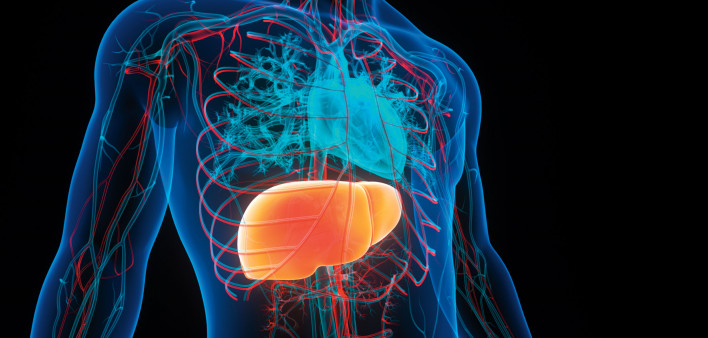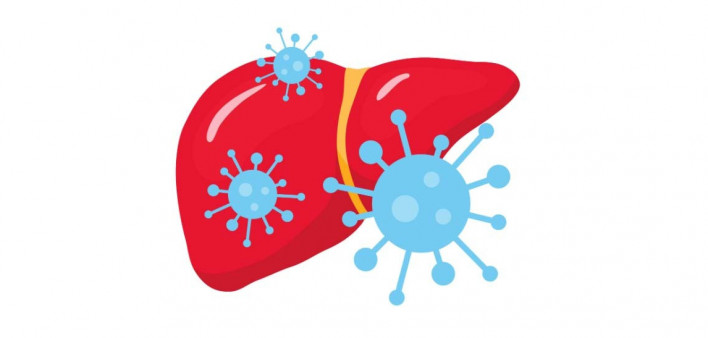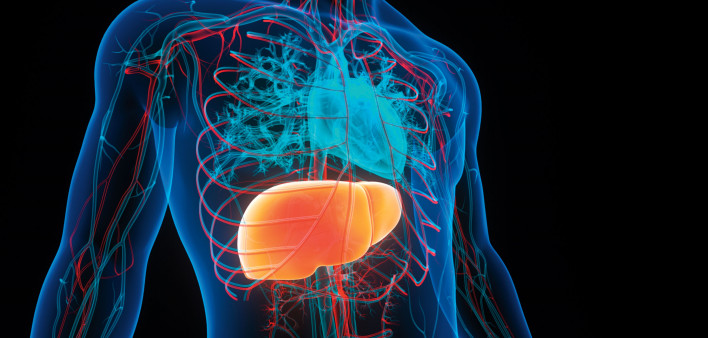New thresholds more accurately identify the likelihood of liver fat and fibrosis in adolescents and adults.
A newly validated waist-to-height ratio fat mass measure is a stronger predictor of liver steatosis and fibrosis than body mass index (BMI), according to a study published in the Journal of the Endocrine Society. These findings support a growing clinical shift in screening for obesity-related health risks. Unlike ultrasound, elastography and DEXA scans, waist-to-height ratiois a cheap and universally accessible tool to detect the risk of fatty liver disease.
Metabolic dysfunction-associated fatty liver disease (MASLD) and its more severe form, metabolic dysfunction-associated steatohepatitis (MASH), are responsible for a growing proportion of advanced liver disease worldwide. Over time, steatosis—the buildup of fat in the liver—can lead to fibrosis, cirrhosis and liver cancer. Fatty liver disease is associated with obesity, type 2 diabetes and other metabolic conditions. With only one approved medication, management largely depends on lifestyle changes such as weight loss and exercise.
Body mass index, calculated using weight and height, is the traditional method for diagnosing obesity, but clinical guidelines have lately recommended verification with other measures such as waist circumference, waist-to-hip ratio and waist-to-height ratio. Recent research suggests that waist-to-height ratio is a better indicator of total body fat mass and abdominal fat mass.
While studies have shown that obesity diagnosed using BMI is a risk factor for fatty liver disease, Andrew Agbaje, MD, MPH, PhD, of the University of Eastern Finland, sought to establish how well waist-to-height ratio categories could predict liver fat and fibrosis.
Agbaje accessed data from 6,464 adolescents and adults in the U.S. National Health and Nutrition Examination Survey between 2021 and 2023. The population was multiracial (56% white, 12% Black, 8% Mexican-American, 11% other Latino), just over half were women and the average age was 47 years. About 20% were ages 12 to 25, and about a quarter were 65 or older.
Based on waist-to-height ratio, 20% fell into the normal fat mass group (0.40 to <0.50), while 14% were classified as having high fat mass (0.5 to <0.53) and 65% as having excess fat mass (≥0.53). In comparison, 17% of adolescents and 32% of adults had overweight and 24% and 40%, respectively, had obesity based on BMI. Noninvasive transient elastography liver scans showed that about a quarter had suspected liver steatosis, 7% had advanced liver fibrosis and 5% had cirrhosis.
High fat mass and excess fat mass according to waist-to-height ratio were associated with steatosis and fibrosis, while normal fat mass predicted a lower likelihood of both conditions. After adjusting for other factors, people with high fat mass were 63% more likely to have steatosis and 31% more likely to have fibrosis or cirrhosis. The odds were even worse for those with excess fat mass, who had a fourfold higher likelihood of steatosis and a 61% higher likelihood of fibrosis or cirrhosis. Conversely, people with normal fat mass had a 48% lower likelihood of steatosis and a 52% lower likelihood of fibrosis or cirrhosis.
Agbaje calculated that high fat mass according to waist-to-height ratio was nearly twofold better at predicting liver steatosis than BMI-diagnosed overweight, while excess fat mass was a sixfold better predictor than BMI-diagnosed obesity.
“Remarkably, the findings were consistent regardless of sex and age. In addition, the findings were similar across the studied white, Black, Mexican-American and Hispanic populations,” Agbaje said in a news release. “The simple and universally accessible waist-to-height measurement is useful in clinical and public health practice for liver disease screening, prevention, diagnosis and management globally.”
Click here for more news about fatty liver disease.
- #body mass index
- #cirrhosis
- #fatty liver disease
- #fibrosis
- #liver cancer
- #MASLD
- #NAFLD
- #obesity
- #overweight
- #steatosis









